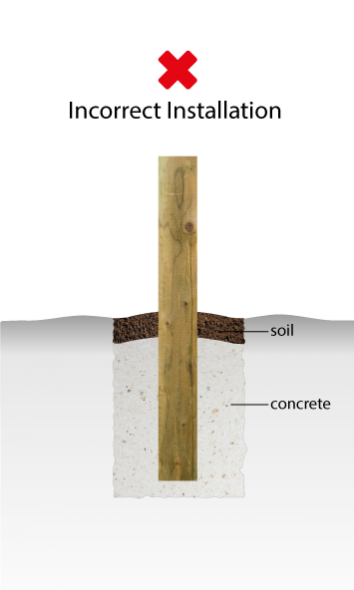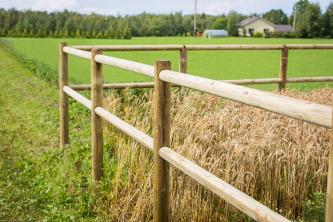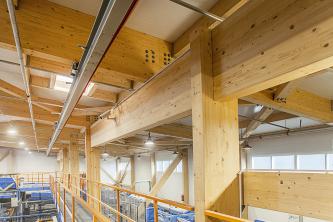General instructions for post installation
NOTE: The type and design of a fence line should be commensurate with its intended use in practice and the expected service life.
Please contact our sales team to get more specific guidelines to specification for different types of fencing.
Timber posts should be treated to the appropriate specification to achieve the desired service life.
All timber posts should be treated to meet the preservative penetration and retention requirements. Particular consideration should be made to incising of refractory species where achieving the correct level of penetration can be difficult.
NOTE: Posts should not be pointed, cross cut or ripped after treatment. Such posts should be retreated.
Post Installation:
1. The size of the hole required for the post is dependent on the height and type of the fence.
2. Concrete could be used to fix timber posts into the ground in order to give them stability once set.
NOTE: Timber through its nature will however naturally shrink and swell with changes in ambient conditions.
3. Timber posts could be set in concrete (or soil) on top of a minimum 50 mm ballast/gravel bed as shown in Figure 2 (or Figure 1 when in soil) since this allows drainage to take place between the post and concrete (or soil).
NOTE: Ballast/gravel will assist in the final position of the post prior to adding concrete.
4. We recommend to insert the posts in the ground in about 1/3 of the post’s full length.
NOTE: For Postsaver installation depth guidelines click here.
5. Under no circumstances should posts be allowed to set on top of a concrete boot (Figure 4) since this prevents drainage and can lead to premature failure of the post under certain conditions.
6. Concrete is to be filled in to 50 mm from the ground line and should be tampered as appropriate to remove residual air.
7. The uppermost 50 mm should be filled in with ballast/gravel to allow free drainage of moisture. This will also restrict vegetative growth at the base of the post and limit the need for the use of a mechanical strimmer which could damage the base of the post.
8. Alternative installation in concrete practice is advised in Figure 3.
Health & Safety:
A risk assessment of the work area should be made prior to the installation work being carried out and if necessary the appropriate PPE should be used at all times.
Care should be taken whether underground services (electrical cables, gas pipes, water etc.) exist in an area to be excavated and a Cable Avoidance Tool should be used wherever possible.
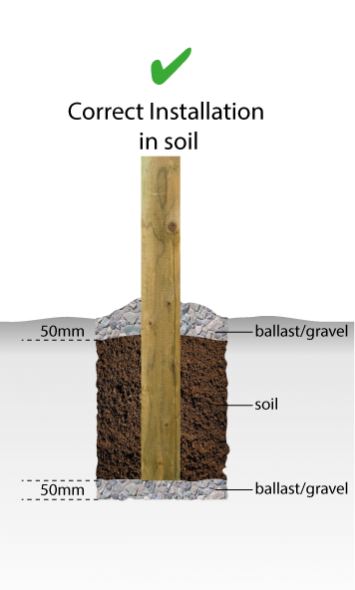
Figure 1
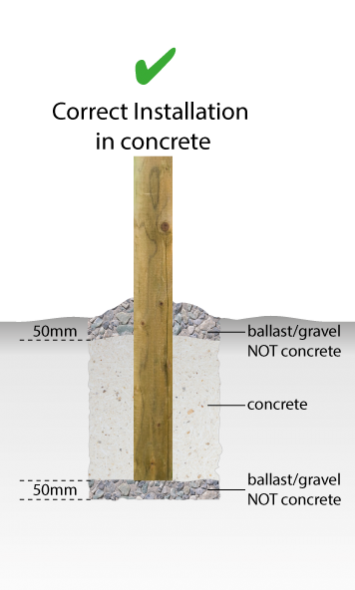
Figure 2
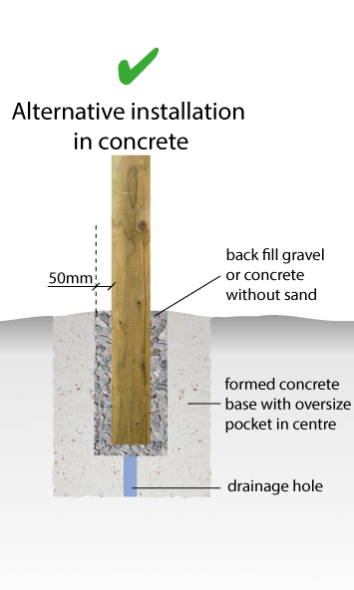
Figure 3
